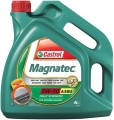Engine
Type of engine for which the oil is designed. If compatibility with your type of engine is not directly indicated in the oil specifications, you should not use this brand. The fact is that all types of modern engines have their own characteristics, and a lubricant not designed for these features can increase wear, reduce power, or even lead to breakdown. Modern oils can be produced for the following options:
—
Petrol. A four-stroke internal combustion engine (ICE) running on gasoline is implied. The main type of motor for modern passenger cars, it is also quite common in medium and high power motorcycles.
—
Diesel. ICE on diesel fuel.
—
Gas-gasoline. Petrol engine (see above), supplemented by gas-balloon equipment and capable of using natural gas as fuel. One of the main features of working on gas is the high operating temperature.
—
Hybrid. Most often, hybrid cars combine a gasoline or diesel engine with an electric motor and can be powered by either one or the other. Both the design of the "hybrids" themselves and their engines can have significant differences from classic cars.
—
2-stroke. Two-stroke internal combustion engines are widely used in motorcycles — in particular, almost all scooters, many entry-level and mid-level motorcycles, as well as tools l
...ike chainsaws, are equipped with such engines. Their main feature is the use of a fuel-oil mixture instead of a separate filling of gasoline and oil.
There are brands of oil that are compatible with several types of engines at once.Volume
The nominal capacity of the package, in other words, the volume of oil supplied in this packaging option.
Depending on the purpose of the purchase, the type of vehicle and other factors, the optimal volume will be different. So,
liter bottles are useful for replenishing the oil supply, or for tasks that do not require high consumption (for example, infrequent work with a gas tool); a capacity of
4 liters is designed for a complete oil change in a passenger car; the volumes required by trucks can reach tens of liters; and for car parks, service stations and other similar organizations, oil is produced in barrels of about
200 liters.
SAE
The degree of oil viscosity, determined according to the international SAE standard. Viscosity is one of the key physical characteristics of an oil that determines its compatibility with a particular engine. Most modern brands of oil are all-weather and are designed for use, incl. and at low temperatures. Therefore, the SAE index for them includes information not only on the viscosity characteristics in a warm engine, but also on frost resistance.
Such an index is usually written in the form of two digits separated by the letter w:
0w-8,
0w-12,
0w-15,
0w-16,
0w-20,
0w-30,
0w-40,
0w-50,
5w-20,
5w -30,
5w-40,
5w-50,
5w-60,
10w-30,
10w-40,
10w-50,
10w-60,
15w-40,
15w-50,
15w-60,
20w-20,
20w-50,
20w-60,
...25w-40. There is also the format SAE 10w, SAE 20, SAE 30, SAE 40 and SAE 50. The first number describes only the cold resistance of the oil, and does not apply to its properties when the engine is warm. If 35 is subtracted from this number, you get the minimum temperature at which the engine can be cranked over to start. In our example, this temperature will be 15-35=-20 °C. Of course, such values are rather arbitrary, because In practice, other factors must also be taken into account. For example, with a “dead” battery (which is not uncommon in cold weather), a cold start can cause difficulties even at a higher temperature than follows from the characteristics of the oil.
The second number determines the characteristics of the oil in a warm engine in normal mode, at normal operating temperatures. It is this indicator that is the main one for choosing a brand of lubricant for a particular car - you must strictly adhere to the manufacturer's recommendations. The fact is that each engine is designed based on strictly defined viscosity values. An oil that is too viscous will linger in large quantities in moving parts, and one that is too fluid will leave them without lubrication at all; In both cases, power drops and wear increases. Therefore, first of all, when choosing according to SAE, the second number and its correspondence to the characteristics of the engine should be taken into account.Approvals Mercedes-Benz
An engine oil quality standard that Mercedes-Benz considers essential for correct operation when used in the engine of its vehicles. For different engines (respectively, car marks) provides its standard, among which there are
226.5,
226.51,
226.9,
228.5,
229.3,
229.5,
229.5,
229.5, 229.5, 229.5,
229.7,
229.5,
229.5,
229.5,
229.3,
229.5,
229.31 , 229.5
